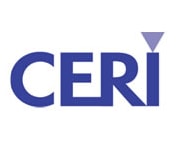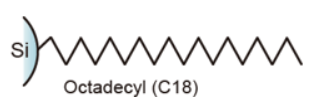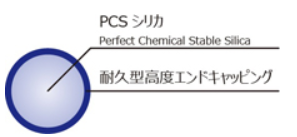212-204-0075
info@pyvot.tech

Pyvot is your direct supplier to purchase CERI L-Columns in North America and South America

Chemicals Evaluation and Research Institute, abbreviated as CERI, is a Japanese company that is involved in a wide range of research and development activities related to chemicals and testing methods. CERI has a long history of developing high-performance chromatography columns for use in high-performance liquid chromatography (HPLC) and gas chromatography (GC). The company’s L-column series is specifically designed for use in HPLC, while the G-column series is intended for use in GC. CERI has been in operation since 1984 and has a reputation for producing convenient and high-performance products for the chromatography industry.
LC column L-column series
L- Column
L-column ODS was introduced in 1990 as a column that eliminates secondary interactions due to residual silanol groups by the high-temperature vapour-phase end-capping method. Outstanding performance compared to commercially available ODS columns at that time was positioned as a pioneer column. It is a column that can be used with confidence due to a stable supply for many years.
| Physical Property Information | L-column C18 ODS | L-column C8 | |||
|---|---|---|---|---|---|
| Base material | Porous high-purity spherical silica | Particle size | 3μm, 5μm | Particle size | 5μm |
| Pore diameter | 12nm | Modifying group | Octadecyl group | Modifying group | Octyl group |
| Specific surface area | 340 m 2 / g | End capping | High-temperature gas phase end capping | End capping | |
| USP category | L1 | USP category | L1 | ||
| Working pH range | pH 2 to pH 9 | Working pH range | pH 2 to pH 9 | ||
 |
 |
||||
Certificated L-column ODS-V (particle size 5 μm only)
L-column ODS-V has a “Certificate of Analysis” attached to the L-column ODS.
“Certificate of analysis” proves that the physical property value and separation behaviour of the lot is within the standard. Supports analytical method validation.
L-column2
L-column2 is a high-performance column that minimizes the effects of residual silanol groups. From acidic substances to basic substances to coordination compounds, sharp peaks can be obtained without tailing with a simple method. We have a rich lineup of phenyl columns, microcolumns and nanocolumns with an inner diameter of less than 1 mm. A metal-free column (glass lining) is also available.
| Physical Property Information | L-column2 C18 ODS | L-column2 C8 | L-column2 C6-Phenyl | ||||
| Base Material | Porous high-purity spherical silica | Particle size | 2μm, 3μm, 5μm | Particle size | 2μm, 3μm, 5μm | Particle size | 2μm, 3μm, 5μm |
| Pore diameter | 12nm | Modifying group | Octadecyl group | Modifying group | Octyl group | Modifying group | Phenylhexyl group |
| Specific surface area | 340m 2/g | End capping | Advanced end capping | End capping | Advanced end capping | End capping | Advanced end capping |
| USP category | L1 | USP category | L7 | USP category | L11 | ||
| Working pH range | pH1 to pH9 | Working pH range | pH2 to pH7.5 | Working pH range | pH2 to pH7.5 | ||
 |
 |
 |
|||||
L-column3
L-column3 has achieved a dramatic improvement in the chemical stability (acid resistance, alkali resistance) of the filler with the newly developed PCS silica and durable advanced end-capping. It is an all-around column that allows you to freely design any method.
| Physical Property Information | L- column3 C18 | L- column3 C8 | |||
|---|---|---|---|---|---|
| Base material | PCS silica (porous high-purity spherical silica) | Particle size | 2μm, 3μm, 5μm | Particle size | 3μm, 5μm |
| Pore Diameter | 12 nm | Modifying group | Octadecyl group | Modifying group | Octyl group |
| Specific surface area | 340m 2/g | End capping | Durable advanced end-capping | End-capping | Durable advanced end-capping |
| USP category | L7 | USP category | L7 | ||
| Working pH range | pH1 to pH12 | Working pH range | pH1 to pH12 | ||
 |
 |
 |
|||
PCS Silica (Perfect Chemical Stable Silica)
A highly chemically durable base material that is resistant to erosion even in alkaline solutions.
L- column Micro is a nano/microcolumn with 0.075-0.3 mm I.D. It is a high-performance column that was manufactured by combining low-adsorption packing materials, including L-column2 ODS, an originally developed packing technique, and a column structure with a small dead volume. L-column Micro shows an advantage at all concentration levels but excels at the lower levels. With superior end-capping and very high theoretical plate numbers per column, L-column Micro permits the identification of many proteins and is the optimum choice for performance analysis. L-column can separate many peptides because of the low-adsorption packing materials. This is effective for the identification of proteins. The column has a high theoretical plate number and high durability because it is packed homogeneously by a patented technique.
Durable advanced end-capping
Advanced end-capping ( adopted for L-column 2 ) reduces silanol groups to the utmost limit and coats the silica gel surface with high density to prevent secondary interaction with silanol groups and metal impurities. It is a technology that eliminates the limit. The evolution of this is the “durable advanced end-capping”, which has further improved low adsorption and durability due to inactivation.
